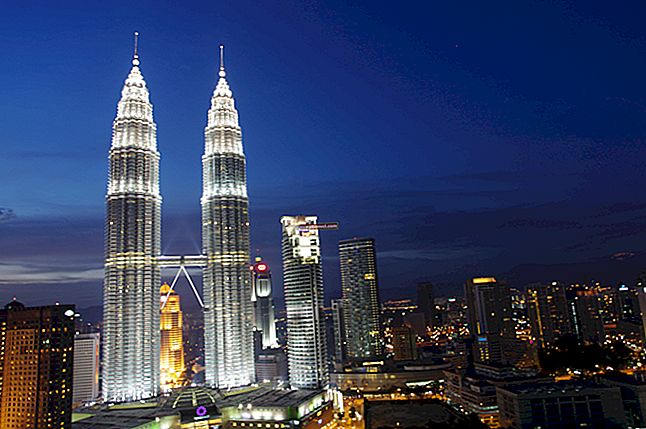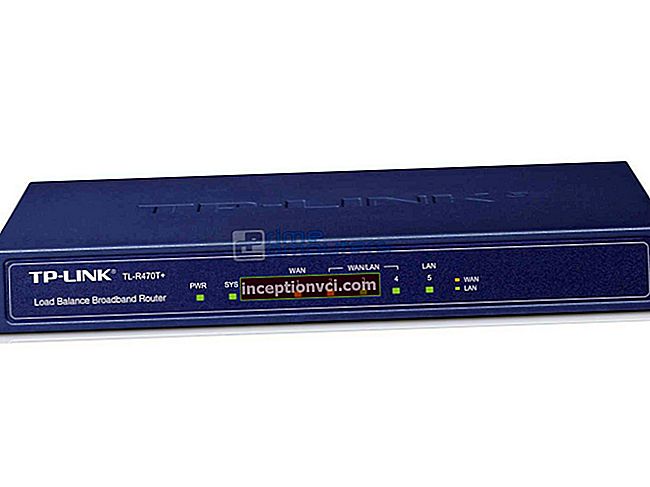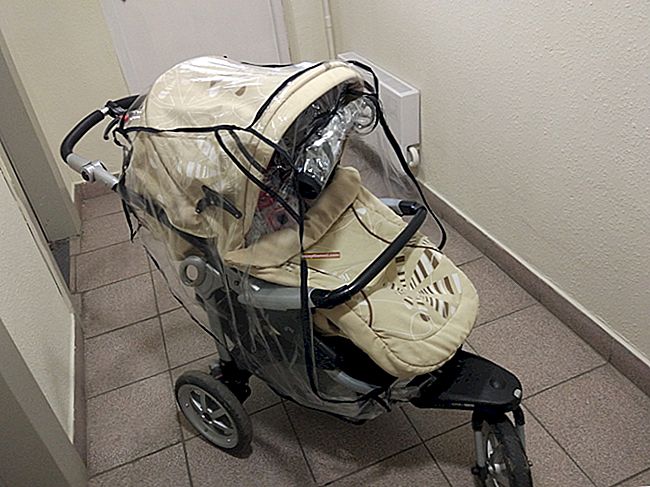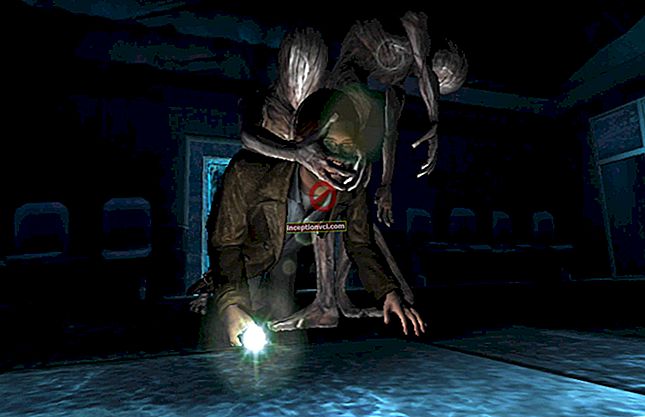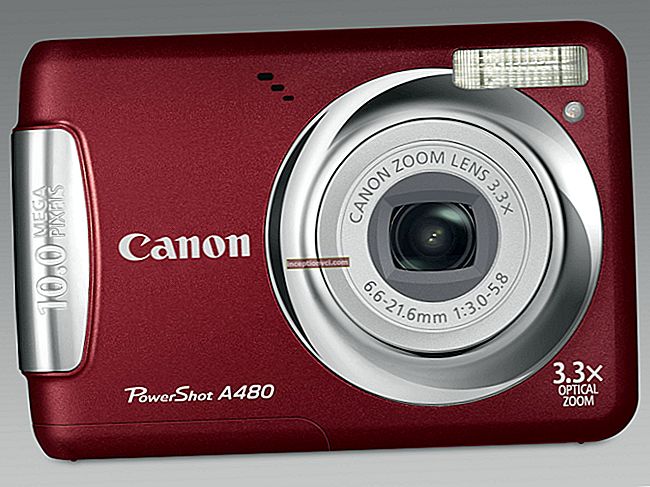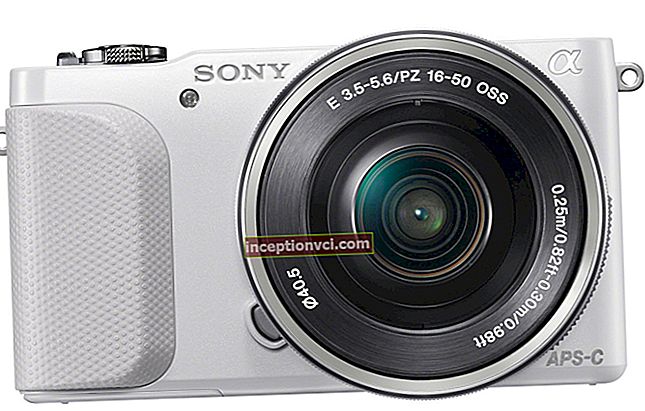Nikon D200 review
For a long time, the impression was that Nikon wandered into some kind of vicious circle of 6-megapixel DSLRs, from which it cannot get out. The Nikon D100 was equipped with a 6MP Sony sensor, as did the later D70, its modified D70s and the hobbyist D50.



At one time, the D70 was called the "killer of Canon 300D" - a duel of two cameras with an undoubted advantage towards Nikon charged the fans of this brand with immense confidence, forcing them to look into the future with hope and head held high, stock up on branded optics. But Canon, without hesitation, brought to the market the rapid-fire 8MP 350D, to which Nikon responded with a camera of a clearly lower level and not too advantageous in price - D50. Canon has reaped an unprecedented user harvest with its 20D, which has already been dubbed the best all-round digital SLR of all time, and Nikon ... Nikon just added an “s” at the end of the D70 name. The photographers knew that something better, of course, was maturing in the Nikon smithy, but they did not wait, moving to the Canon camp. And now, finally, the last calculations, drawings and test formalities went down in the history and archives of the company, and the D200 model came to the shelves of physical and virtual retail outlets. In terms of specs, the camera looks like a miniature version of the D2X at the price of a Canon 20D: 10MP resolution, 5fps continuous shooting, 11-point AF system, new optional vertical grip, wireless protocol support and even GPS. Plus a whole host of other advanced functions. An unambiguous upgrade for the old lady D100. However, we will not be interested in the official functional and technical fact, but in the results of tests carried out in the field.
Ergonomics and control
Let's start with the design of the case, its ergonomic characteristics and ease of use. The model of the case is created according to the template of the once considered semi-professional D100 and the favorite of D70 lovers. But the metal base and dust and moisture protection inserts at the joints of the compartments and panels, around the controls are echoes of the professional version in the guise of D2X. The camera cannot be called completely protected from any unbridled nature, since its weak link still remains the bayonet connection. Few of the latest high-end Nikkor lenses have rubber plugs along the metal mounting ring. The D200 is moderately weighty - just enough not to feel heavy, ensuring balance while shooting. Many old Nikon fans have long expressed a desire for a DSLR that could be called the equivalent of the legendary F100, while implying ease of use, the absence of purely consumer features like scene programs. The company seems to have listened to them. The body is made of durable magnesium alloy, its massive handle and the back of the panel - where the thumb rests - are comfortably rubberized. The grip of the camera is as if cast on a human hand. The layout of the controls is almost identical to the D2X logic diagram. The buttons are larger than usual, allowing the photographer to feel comfortable using gloves in cold weather. The bright 2.5-inch 230K-pixel LCD is another legacy from the D2X. Not without some improvements in the implementation of the menu interface. Its visual layout has remained unchanged, but fonts and icons have received additional protection from aliasing and higher resolution. As always, Nikon is equipping its camera displays with a transparent protective cover to prevent scratching on shirt buttons and jacket zippers. The cover fits so tightly to the display that it does not fog up on the inside during shooting.
On the top panel on the left rises a small command post D200, consisting of three buttons - a choice of options for white balance, image quality and ISO, as well as a control wheel. The latter is used to set one of the modes: single-frame shooting, continuous low-speed (1-4 fps) and high-speed (up to 5.2 fps), self-timer and preliminary raising of the mirror to reduce vibrations. However, to take an exposure after lifting it, you still have to touch the camera by pressing the shutter button. Why not make this useful feature even more useful by relating it to the self-timer? Unlike amateur DSLRs, which use a separate dial to select the exposure mode, the D200 does this in a professional manner - by simultaneously pressing the Mode key and scrolling the control wheel. It is practical and convenient. And one more little nuance concerning the thoughtful arrangement of the controls. A fairly “walking” depth-of-field preview button is located to the left of the bayonet mount (when viewed from the front), within the immediate reach of the middle finger of the right hand gripping the grip. This is perhaps the most suitable place for her.
Sensory News
Without exaggeration, these are the most important. The fiery heart of the D200 is a CCD that has once again rolled off the Sony assembly line (possibly the last, given the acquisition by the Japanese giant of rival Konica Minolta). Its 10.2-megapixel effective resolution is sufficient for printing images with a format of approximately 27x40 cm without overclocking photos. Minimum sensitivity is fixed at ISO 100 and can be increased to ISO 1600 in 1/3 increments. To ensure high-speed data processing and a decent continuous shooting mode, the designers have implemented four-channel analog-to-digital information conversion. That is, the combination consisting of two green, blue and red cells of the Bayer pattern, in which 10.2 million pixels are organized on the sensor, has its own "output" to a separate analog-to-digital converter (ADC). Whereas in the sensors installed on previous Nikon DSLRs, a single ADC was used for all cells. He processed the data sequentially in a row. The size of one pixel of the new sensor is about 6 microns, which is 3.5 microns less than that of the professional D2H sensor. And we know that the more light-accumulating area, the more it will collect photons, providing an acceptable signal-to-noise ratio. If we didn’t have an exemplary example of the low noise of the Nikon D2X APS-C sensor, we could start worrying right now: after all, 10.2 megapixels squeezed into an area of 23.6x15.8 mm is too much. However, we remain cool. Practical tests will show you what's what.
So what has Nikon done to reduce digital noise from a purely technical point of view? First, the data is stored in 16-bit space until the final compression and conversion to 8-bit JPEG. Second, they are processed in analog space - at the electron level, before being amplified and digitally converted. Finally, the camera implements a noise reduction system that applies separate algorithms to noise that occurs at slow shutter speeds and high ISOs. Among other things, the light-sensitive surface of the sensor is framed by a fairly strong anti-aliasing filter, which can cause excessive "softness", that is, unsharpness of raw images. Again, the tests will judge. And more about filtering ultraviolet and infrared radiation. Let's face it, the D200 is not a good IR camera. It seems that with every new DSLR model, Nikon is getting stricter on this type of light. If you plan to practice IR shooting, get yourself a D100.
AF system and performance
The situation with the sensor has cleared up a bit. But that was just the tip of the iceberg, or rather the bottom of it - as the most important part.However, there is also a multi-level cascade of functional and technical features. It so happened that today, when discussing the "class affiliation" of DSLRs, they talk about them most and longest. Functionally, the D200 is a real Klondike. We tried to compile a list of differences from D2X, which costs almost three times more, and were shocked that only 6-7 points came out.
The D2X accelerates to a faster continuous shooting speed of 8 fps, albeit in the mode of using only a part of the sensor. It is equipped with a built-in vertical (portrait) grip, uses almost twice the number of sensitive cells to obtain focusing information - 2000 versus 1100, and its viewfinder displaying 98% of the field of the frame is equipped with a special shutter that should prevent stray illumination of the exposure meter through the eyepiece with long exposures. As for the rest, the D200 is almost an exact copy of its older sister. So far, without taking into account the quality of the pictures, you can safely put it on a par with the Canon 5D. After turning on Nikon goes into a state of full alert for 0 sec. This is not a typo: we pressed Power and the D200 woke up immediately. One RAW file, occupying about 15 MB of card space, is ready for viewing on the LCD in 1.5 seconds after the shutter is released (after another 2 seconds, such a file will be finally written to the memory card). Not bad, right? Further, in the continuous shooting mode, the device worked out 35-39 JPEG files at a speed of 5.2 fps, and then dropped the speed to 1.8 fps. It took 14.5-15 seconds to free the memory buffer. The autofocus system works more like the standards of the D2-line DSLRs, but still falls short of them. The D200 has two AF-area modes - Normal (11 points) and Wide-area (7). Although the first is the default mode, it seems that the camera has only 7 zones, from which 11 zones of the "normal" mode are formed. Experience has shown that it is more convenient to use it when focusing on static objects, and the wide zone mode - on dynamic ones. The AF points are arranged in an octagon (diamond) shape on the viewfinder screen. It might seem that this shape leaves large areas in the center and vertical planes unaccounted for. In fact, the opposite is true - the closer to the center of the frame you focus, the more effective the result. Some professionals will consider this a minor limitation, for example, when it comes to observing moving objects that cannot always be kept strictly in the center. The professional D2X wins here. The slightly complicated selection of a focus point somewhere on the "periphery" of the octagon takes habit.
When shooting with this camera, we often had to resort to focusing followed by re-framing. The AF-area mode switch to the right of the LCD is a tough nut to crack. Rather, not the switch itself, but the modes into which it switches the camera. Their abundance can plunge even seasoned users into a state of mild shock. In addition to the standard "kitchen" set - all-point focusing on the closest subject, and manual single-point AF mode, you have more sophisticated options at your service. For example, Group Dynamic AF lets you select multiple points in the center, left, right, bottom, or top. In this case, the focus will be determined by the area in which the nearest object falls. In dynamic-area AF mode, you work with one manually selected point, while the camera uses information from all neighboring points to focus. This is convenient when the subject leaves the focus area from time to time. The D200's autofocus system also has a stranglehold, forcing the camera to follow the subject despite distracting foreground movements. Indeed, it will take time to fully master all its possibilities. But just imagine how close to ideal the result can be.
In addition to the very flexible white balance setting, including manual setting for a neutral gray object (or white sheet), Kelvin scale or finished images on a memory card, as well as numerous additional settings for sharpness, color space, saturation, we would like to note how control over the state of the battery is professionally implemented. Through the menu, it is easy to get detailed information about how much remains of the initial charge and how many frames it should be enough for. Truly, professional standards are becoming more accessible.
Image quality
Nikon D200, your "X" hour has come. Now the camera should show its class, demonstrating the expected logical outcome in the form of decent shots. Let's start with color rendering. As shown by test software calculations and distribution on Imatest graphs, color consistency across the entire ISO range is absolutely phenomenal. At ISO 100, the average color saturation of the image as a percentage of the average saturation of a certain reference is almost 99%. At ISO 1600 this figure shifts by only 3% down. For images shot in the AdobeRGB color space, saturation was lower than expected, while for sRGB it was slightly higher. Absolutely nothing critical. Individual color misalignment is an almost non-existent problem with the D200. This can also be seen in the graph, where the circles represent the deviations of the colors recorded by the camera from the ideal - the squares in the CIE LAB color space. It is rare, if not unique, when they practically coincide in most colors. If we are to give some general description of the trend, then with a great degree of conventionality we can say about the gravitation of yellow, blue and purple to the central part of the graph - that is, their more "muted" transmission. But the accuracy in reproducing red and blue colors is beyond praise. This is despite the fact that, for example, red in one way or another turns out to be oversaturated in almost all cameras (for the purpose of an attractively vivid image of skin tones). Another plus for Nikon is the excellent balance of contrast and neutral color tones when shooting at extreme ISOs, which usually suffer from noticeable color distortion.
The white balance system has once again demonstrated the powerlessness of automatic settings before the eternal thunderstorm of digital cameras - incandescent lamps. And the professional D2X showed exactly the same reaction. However, when there are preset settings and the ability to manually set the white balance, after which everything falls into place, is it worth talking about any problem at all? Digital noise is another issue to which we devote fairly detailed analytical calculations in each test. High operability of the camera at maximum ISO is especially important for professional reportage, genre photographers who work in difficult light conditions, when using a tripod or flash is out of the question. The D200 has two digital noise suppression features: a separate long exposure function by double exposure and matching the main shot with a frame taken with a closed aperture, and an algorithm for filtering noise that occurs at high ISOs. As tests have shown, no additional noise reduction is required for exposures up to 30 seconds. The noise that builds up as the ISO increases is a little more complicated. They reach the point where they can be considered any significant problem, only at ISO 800. Here, the work of the camera on their cleaning becomes noticeable - the level of detail gradually decreases, and with it the clarity of pictures. Turning off the noise canceling function and we get a slightly better result. With a slight increase in noise intensity, small details remain practically intact. In addition, the noise itself in the luminance signal in a typical Nikon's manner has a fine-grained structure, reminiscent of a film.Fortunately, the chroma signal, which is usually “noisy” with red and blue fuzzy dots, is well controlled by in-camera algorithms. In general, in this regard, the D200 behaves almost the same as the D2X. The resolution of the sensor is serious - more than 160 pixels / mm (in the D2X - about 180). However, to get the most out of that number, you need a high-end lens. And, of course, professional shooting techniques, including a stable tripod, preliminary raising of the mirror, a release cable or remote control, the use of critical apertures to avoid diffraction, etc. It's worth mentioning the following feature: By default, the D200 behaves extremely conservatively when it comes to sharpening. Therefore, JPEG images coming directly from the camera to the user's computer look too "soft". Naturally, they contain the entire 10-megapixel resolution potential, and all you need to do is set the Sharpening parameter to High (high level of sharpness), or apply the Unsharp mask filter in Photoshop. Or just shoot in RAW format.
And one more nuance. Immediately after the release of the first batch of cameras, a strange "phenomenon" began to emerge here and there, expressed in the appearance of images in the shadow areas against the background of brighter areas of small vertical stripes, which were called vertical banding on Western forums. It was about shots taken at high ISO. Obviously, the problem really did take place, as Nikon recognized it and offered all "victims" free camera calibration. It makes no sense to discuss in detail what you know only by hearsay. No suspicious streaks were found in several hundred test images taken with our camera. In conclusion, I would like to say the following. We live in a unique time of general availability of professional technology. A camera like the D200 is the embodiment of the wildest desires of advanced enthusiasts and even professionals. Today there are no analogues to it. Of course, this is not a full-frame Mark II and still not the flagship of the Nikon D2X line of DSLRs. However, in terms of functionality and image quality, it is so close to the latter that only those who are not used to counting money at all will not think about the expediency of almost three times overpayment. And here we need to pay tribute to Nikon, which was not afraid to meet consumers halfway, despite the upcoming competition between their own DSLRs. However, professionals who have reached such a level when it makes no sense to compromise in choosing a working tool will nevertheless prefer a bright viewfinder, an even more advanced autofocus system, two extra megapixels of resolution and a capacious D2X battery. But it is also obvious that with this camera Nikon has cleverly laid down the competitor in the face of Canon 20D, while at the same time encroaching on the 5D niche. You can conditionally place the D200 somewhere between them. It clearly outperforms Canon 20D in terms of functionality, performance, price / performance ratio, and, to avoid unnecessary explanations, let's just say: nominally - in terms of resolution. And 5D is hard to compete with. It's up to you to decide whether or not to overpay the extra days for a full-format sensor that reveals the flaws of the lenses, the ability to print pictures at a slightly larger size and more acceptable noise levels at ISO 1600 and 3200. However, the D200 won its victory even so.
Key points
Built-in flash
On the left of the front panel, just below the flash itself, there is a button to raise it to its original working position. The flash is raised at a sufficient distance from the plane of the lens, which serves as a guarantee that the portrayed "red eyes", and also allows the use of wide-angle lenses with a hood screwed to them. In the pictures obtained with their help, no darkening was observed. The D200 offers flash compensation adjustments from -3.0 to +1.0 EV.
Memory card
The memory card compartment is located, as always, in the camera handle, the compartment door opens to the right - a spring mechanism is triggered. In the locked position, the door merges completely with the handle. On the inside, it is rubberized to prevent moisture penetration. The camera achieves very high speeds in continuous shooting mode - up to 8.5 MB / s for RAW files. During testing, we used a SanDisk-branded Extreme III card. From the wishes - the presence of an additional slot for SD cards.
Interfaces
They hid behind rubber plugs on the left side of the cell. From top to bottom there are: an audio / video port for broadcasting footage on a TV screen (supported formats are PAL / NTSC), followed by a DC adapter connector, designed to work from a set in a studio, and closes the three interfaces in this part of the camera USB 2.0 port. The data transfer speed through it exceeds the indicator for standard card readers. A 10-pin remote connector connects to a GPS adapter that records the geographic coordinates of the image.
Hot shoe platform
thanks to it, the camera is compatible with third-party flash units and its own devices such as SB-800, SB-600, SB-P200 with wireless i-TTL control, including multiple flash units and power lock. These devices also take into account the distance to the subject transmitted by type D and G lenses when calculating the pulse. In addition, the D200 works with 28DX, 80DX and others without intelligent TTL control.
"Tower" of management
In this original manner, Nikon equips its professional DSLRs with a tower key / command dial combination. It allows you to select shooting modes - single frame, continuous low / high speed, mirror pre-lift mode - or activate the self-timer. The top two keys - white balance, image quality and aspect ratio, function in combination with the front and rear control wheels located on the grip on the right. The ISO key is responsible for the current sensitivity.
Sensor
After the D2X CMOS sensor, Nikon returned to the CCD. Nikon still lacks cameras with full-size matrices. 10.2 megapixels fit into the area of the APS-C format sensor, or, as Nikon calls it, DX.
Despite the tiny individual pixel size, the D200 handles digital noise very well. The sensor is equipped with a powerful anti-aliasing filter, which is the reason for the excessive "softness" of the images coming straight from the camera. However, this is easy to fix with the Unsharp mask in Photoshop.
Battery grip
Vertical, portrait. In the D2X, it is integrated into the case. It is a very convenient accessory from an ergonomic and practical point of view. The battery grip contact base is inserted into the camera grip. For additional connection, screw the screw into the D200 tripod socket. The grip houses two additional control wheels, a shutter button and an autofocus key. Its battery compartment holds two standard batteries or six AA cells.
Viewfinder
Fixed optical pentaprism with built-in diopter correction and effective field of view - 95%, bright enough, despite the crop factor equal to 1.5. Unlike the D2X, there is no internal shutter to prevent unwanted light from the sensor during long exposures. The information bar at the bottom of the screen is quite informative, but among other data, you will not find an indication of the current white balance settings. In addition to focusing points, a convenient framing grid can be displayed on the screen.
Bayonet / mirror
It's a trifle, but nice: the sound of the mirror triggering with a click of the shutter “warms up” the ear. It is so smooth and muted. The camera has a solid metal Nikon F mount.The lenses are attached to it by rotating clockwise and then a little flip in the opposite direction. The D200 is compatible with a range of Nikkor lenses, including the manual focus AI series since 1977 (with partial loss of function, of course).
Main menu
The organization of the D200's menu system follows the pattern set by the professional D2X in many ways. Thanks to the higher font resolution and redesigned icons and labels, the menus are clearer and more user-friendly. Navigation is carried out using the arrows located to the right of the LCD display on the D-Pad.
Histograms
This is a real hit on the Nikon D200 menu. The user can call not only the general brightness histogram, but also individual for each color channel, which will help to detect unwanted shades. As you shoot, you will find that the histogram is an indispensable and very accurate tool for controlling the correctness of the current exposure.
Help function
The presence of these kind of tips sets Nikon apart from other manufacturers of advanced photographic equipment. Simply press the question mark key to the left of the display and help information for the current function / parameter will appear on the screen. It is incredibly convenient and useful even for sophisticated amateur photographers when there is no user manual at hand.
User settings menu
Visibility and high graphicality ensured clear organization of user menu commands. Here, each set of operating functions, such as the autofocus system, exposure metering, exposure modes, etc., is marked with its own color, which greatly simplifies the work.
Magnification
A slightly unsuccessful function of enlarging parts of the captured image. The process is quite complicated - it is necessary to take several steps to get an enlarged portion of the desired area. The magnification area is changed with the control wheel. The square-indicator is moved by the arrows of the D-PAD
Diagram
Most of the colors are recorded very accurately, in extreme cases - with a slight tonal mutedness. Slightly oversaturated only green
Functionality
Awesome. All their wealth with minor restrictions was inherited by the D200 from the professional D2X.
Construction quality
For the first time, a camera of this level has dust and moisture protection elements. Everything from the magnesium chassis to the plastic LCD screen protector reflects the manufacturer's commitment to professional design standards.
Ease of use
The D200 is a pleasure to work with. The abundance of external controls, combined with their intuitive layout, brings the camera closer to mechanical standards. Only a little confusing is the autofocus system, in particular its zone modes.
Image quality
The pixel potential behind the soft mask is solid. Whereas the difference in resolution from the 12MP Canon 5D is barely noticeable. True, the CMOS sensor of the latter still provides a little less "noise" at high ISO. The rest is top class.
Price-quality ratio
Well, here is the maximum score without hesitation. Before us is a completely professional camera with an absolutely non-professional price tag.
Verdict
We can envy the future owners of the D200 with white envy and pay tribute to the manufacturer who managed to bring to the market a truly affordable professional device. Once again, you can admire the quality of the images, listing in your mind all the multifaceted functional set of the camera, note the professional level of the body design and high speed characteristics. And finally, from the bottom of our hearts, we would like to recommend the D200 to all those interested and just interested.
Specifications (edit)
Image sensor - 23.6x15.8mm CCD
Shared Pixels - 10.92 million
Eph. pixels - 10.2 million
Maximum image size - 3872x2592 pixels
Light sensitivity - ISO 100-1600 in steps of 1/3, 1/2 and 1.0 EV; 2000, 2500, 3200 in Boost mode
Data storage format - NEF-RAW (12-bit RAW uncompressed or compressed), NeF + JPEG, JPEG
Color spaces - sRGB (2 modes), AdobeRGB
Bayonet mount - Nikon-F, crop factor x1.5
Lenses - AF Nikkor (including AF-S, DX, VR and D- / G-) - all functions are available; other types of lenses are compatible, but with partial loss of certain functionality
Autofocus - TTL phase detection, Nikon Multi-CAM1100 autofocus module
Autofocus range - EV from -1 to +19 at normal temperature and ISO 100
Focus areas - selection of 11 areas (7 areas in wide area mode)
Autofocus illuminator - white lamp
AF area modes - single-zone autofocus, dynamic with tracking focus and Lock-on function, dynamic with priority of the nearest subject, group dynamic
Focus modes - single automatic (S), continuous automatic (C), manual (M). Focus tracking system is activated when focusing on the subject in the first two modes
Exposure metering - 3D-matrix color metering (3D Color Matrix Metering II) - for Nikkor lenses D- / G-, center-weighted (75% of information is read from an area of 8 mm diagonally), spot (an area of 2 %% of the entire area of the frame ) - for Nikkor lenses with built-in CPU
Metering range - 0-20 EV (2-20 EV spot metering) at normal temperature and ISO 100
Exposure modes - auto, programmed (with flexible program), shutter speed / aperture priority, manual
Exposure compensation - +/- 5 EV in steps of 1/3, 1/2 and 1.0 EV
Auto bracketing - exposure and white balance bracketing - 2 to 9 frames burst in 1/3, 1/2, 2/3 and 1 EV steps
Excerpt - 30-1 / 8000 sec, Bulb mode
Depth of field preview - provided
Shooting modes - frame by frame; high-speed continuous, low-speed continuous, self-timer mode with timer; mirror pre-lift
White balance - auto, manual mode (4 settings), preset modes (6 positions), indication of color temperature in K from 2500 to 10,000 with an interval of 31 steps. White balance bracketing
Flash connectors - hot shoe platform, external flash sync connector
Flash sync at shutter speed - 1/250 sec
Flash modes - Front-curtain sync (normal), red-eye reduction, slow sync, slow sync with red-eye reduction, rear-curtain sync
Flash output compensation - -3 to +1 EV in steps of 1/3 and 1/2 EV
Viewfinder - non-replaceable optical with pentaprism with built-in diopter correction in the range from -2 to +1 m
Viewfinder field of view - approximately 95%
Image settings - sharpness, tone compensation, three color modes, adjusting hue and saturation
Cards memory - CompactFlash type I / II, Microdrive. FAT 32 format support
LCD display - color, 2.5 inches TFT, resolution 230,000 pixels
Video output - NTSC / PAL
Interface - USB 2.0
Remote control - 10 pin connector
Batteries - Li-ion battery EN-EL3e with a capacity of 1500 mAh
Dimensions (edit) - 147х113х74 mm
Weight - 920 g (with battery)
Read: "Advantages of Mirrorless Cameras"

